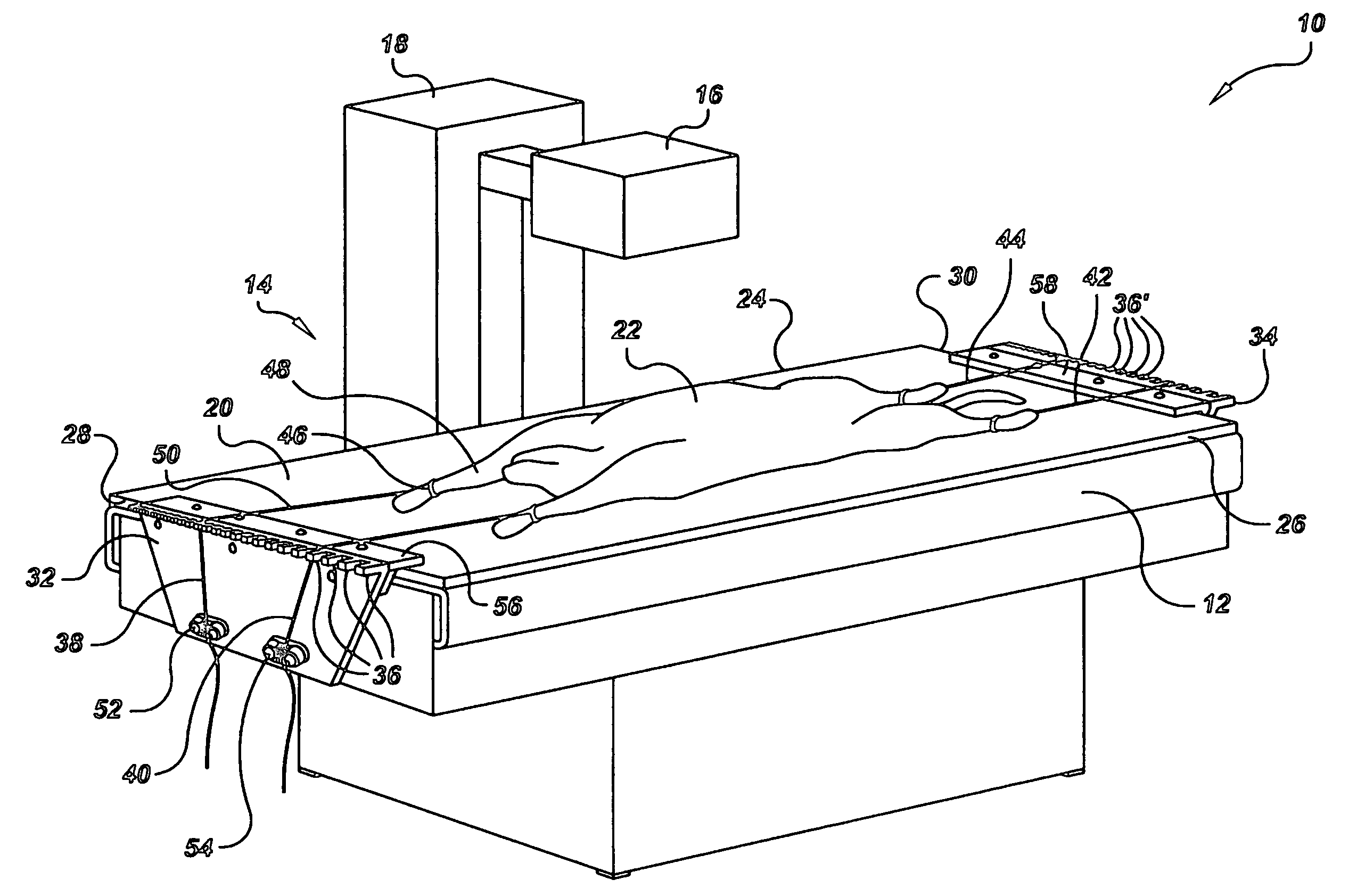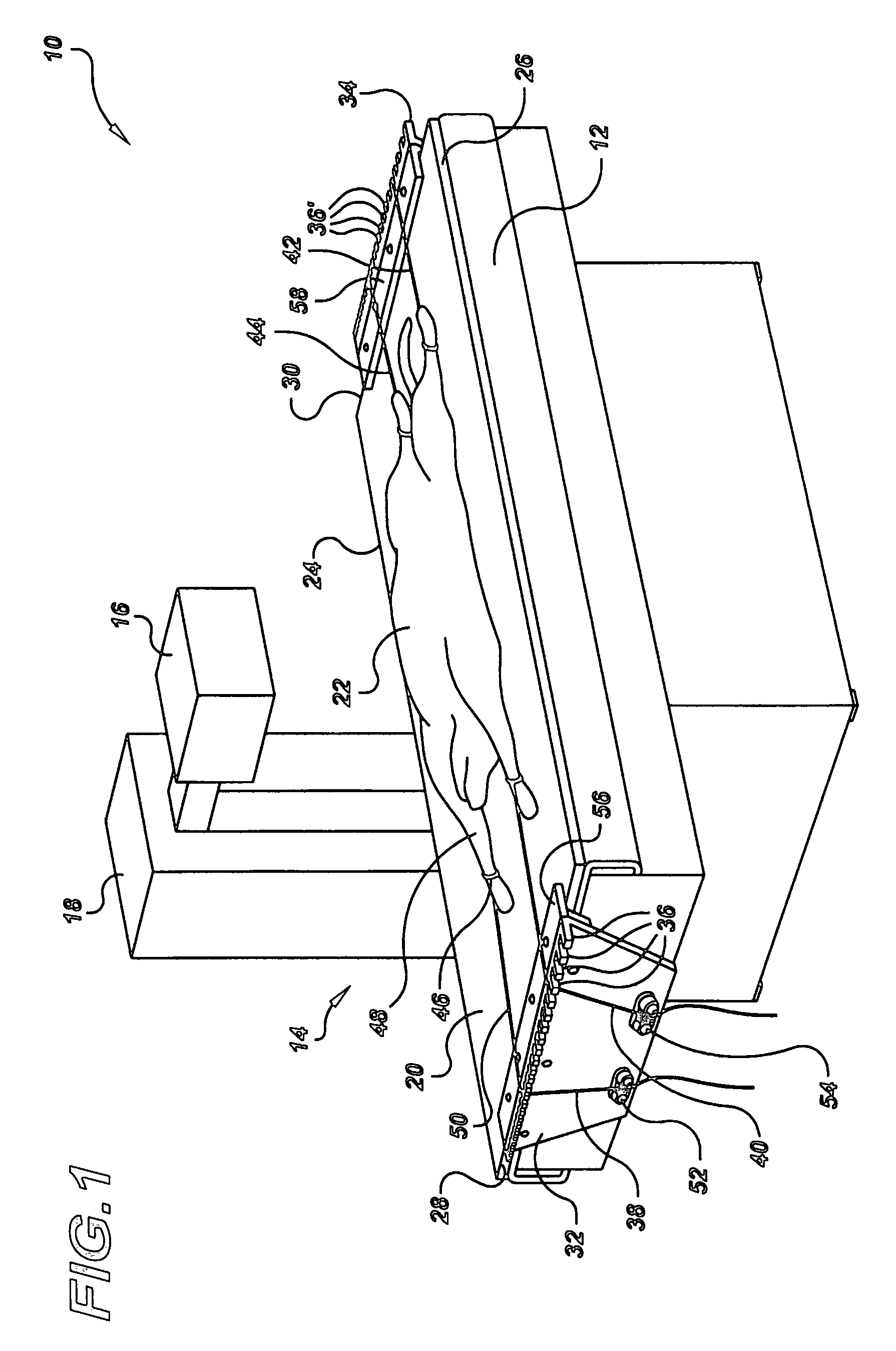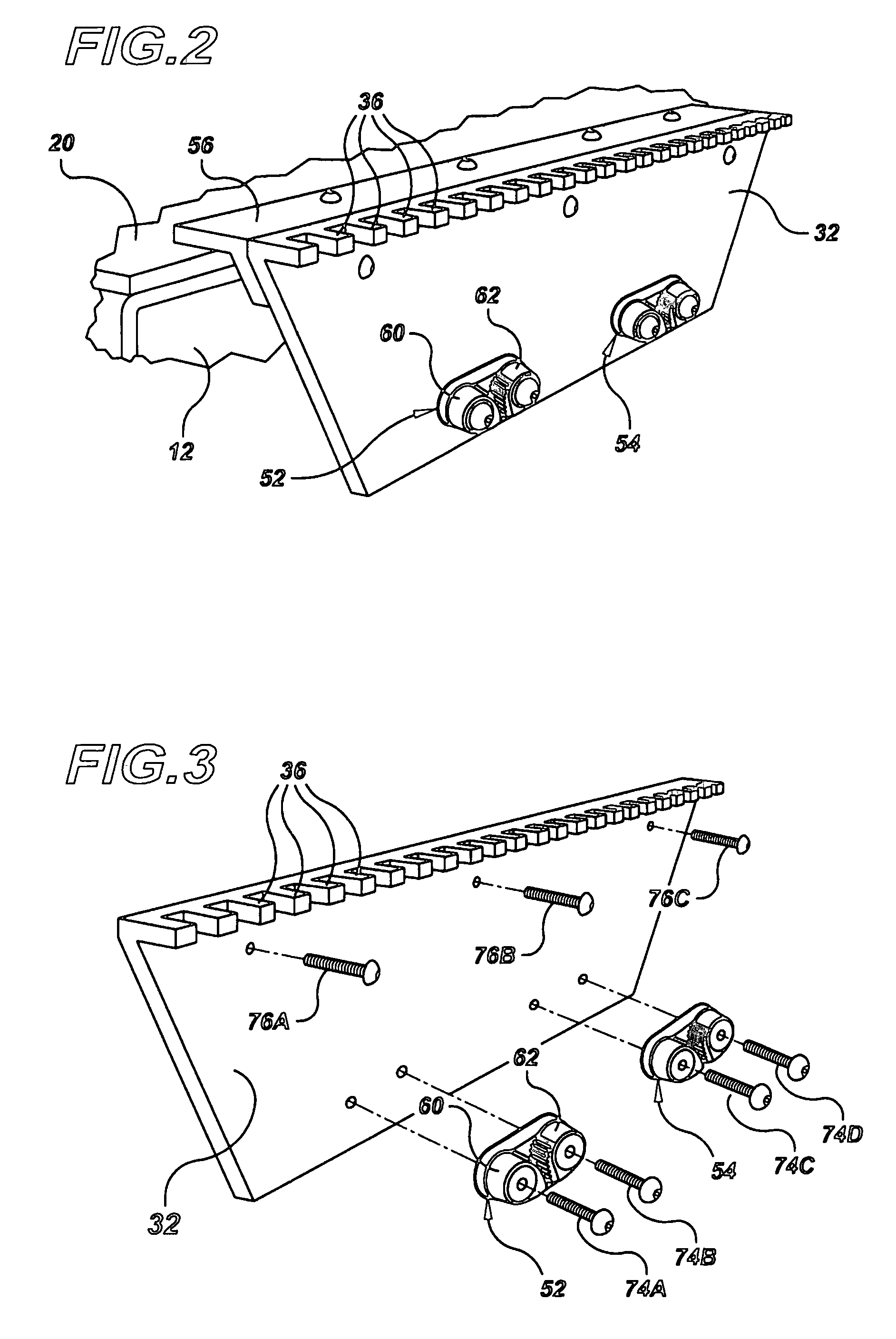System for rapidly positioning a small animal on a veterinary table
a technology for veterinary tables and small animals, applied in the field of positioning devices and systems, can solve the problems of insufficient flexibility, time-consuming use, and frequent injury of small animals such as dogs and cats, and achieve the effects of convenient x-ray or other treatment, convenient use, and rapid and efficient security
- Summary
- Abstract
- Description
- Claims
- Application Information
AI Technical Summary
Benefits of technology
Problems solved by technology
Method used
Image
Examples
Embodiment Construction
[0023]Referring to the drawings in detail, a preferred embodiment of a system for rapid positioning of a small animal on a veterinary table is shown in FIG. 1, and is generally designated by the reference numeral 10. The veterinary table 12 may be part of a veterinary x-ray machine 14 having an adjustable x-ray emitter 16 secured to a variable-position x-ray tower 18, or a fixed-position x-ray tower 18 secured to a variable position table 12, as is well known in the art. The veterinary table 12 includes a support surface 20 for supporting a small animal 22, such as a dog. The support surface extends between a first side edge 24 and an opposed second side edge 26, and extends between a first end edge 28 and an opposed second end edge 30.
[0024]The preferred embodiment of the system 10 shown in FIG. 1 includes the first end edge 28 having a first guide plate 32, and the second end edge 30 having a virtually identical second guide plate 34, wherein each guide plate 32, 34 covers at leas...
PUM
 Login to View More
Login to View More Abstract
Description
Claims
Application Information
 Login to View More
Login to View More - R&D
- Intellectual Property
- Life Sciences
- Materials
- Tech Scout
- Unparalleled Data Quality
- Higher Quality Content
- 60% Fewer Hallucinations
Browse by: Latest US Patents, China's latest patents, Technical Efficacy Thesaurus, Application Domain, Technology Topic, Popular Technical Reports.
© 2025 PatSnap. All rights reserved.Legal|Privacy policy|Modern Slavery Act Transparency Statement|Sitemap|About US| Contact US: help@patsnap.com



